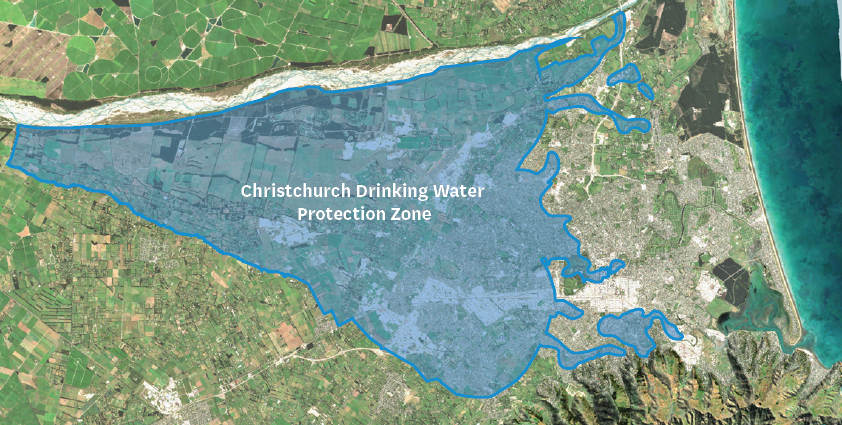Our drinking water
Safe and reliable drinking water is essential for everyone and needs to be protected but no water supply is completely without risk.
Water can be contaminated by bacteria, viruses, nitrate, metals and other chemicals. Some contaminants occur naturally, while others come from human activities.
If you’re on a reticulated supply, your local council or water supplier will assess those risks and make sure your drinking water is safe. If you have your own well or surface source, the responsibility rests with you.
Who helps ensure our water is safe to drink?
The regional council
Our role as a regional council is to monitor surface water and groundwater across the region and regulate activities that might affect water quality. However, specific monitoring of water supply sources is the responsibility of water suppliers.
The regulator
Community drinking water supplies are regulated by Taumata Arowai, a government agency created in March 2021. Taumata Arowai is responsible for ensuring that water suppliers provide safe water that meets the drinking-water standards. The water quality requirements for drinking water are set in the drinking water standards and drinking-water aesthetic values.
If you own or operate a water supply that is being used as drinking water by people outside of your own home, you are deemed to be a drinking water supplier and will have responsibilities under the Water Services Act 2021.
Reticulated water supplies
If your water is provided by someone else, that provider must have a drinking water safety plan or acceptable solution. Local councils often supply drinking water to local communities. For more information about your council water supply, visit your council's drinking water webpage:
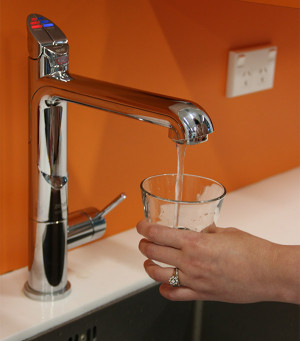
Our role is to monitor surface water and groundwater across the region
- Kaikōura District Council
- Hurunui District Council
- Waimakariri District Council
- Christchurch City Council
- Selwyn District Council
- Ashburton District Council
- Timaru District Council
- Mackenzie District Council
- Waitaki District Council
- Waimate District Council.
Some properties have their water supplied by a privately-owned community water scheme. If your water is supplied by a privately-owned scheme, you should contact the scheme's owner directly if you want information.
Taumata Arowai maintains the Public Register (Rēhita Tūmatanui) of drinking water supplies which you can search and find the drinking water supplies in your local area. Some drinking water supplies may not yet appear on the register because of the phased introduction of this requirement for smaller suppliers.
Am I a water supplier?
If you own or operate a water supply that provides drinking water to more than one household, then you are considered a drinking water supplier under the Water Services Act 2021. All drinking water suppliers have a duty of care to provide safe drinking water to the communities or people who rely on their supplies. If your drinking water supply is unregistered, you have time to find out more and to get the advice or support you need.
Taumata Arowai has provided useful information to help you determine if you are a water supplier, what you need to know, and key timeframes for registering your supply and fully complying with the Water Services Act.
Private household water supplies
If you get your water from your own private household supply, such as a well or spring, or use a rooftop rainwater collection system, then it is your responsibility to provide water that is safe to drink.
This also applies to landlords and people who rent out part of their property where the water supply comes from a private source. The Building Act 2004 requires dwellings to have an adequate, convenient and available supply of potable water.
Note: Private household water supplies are also referred to as a Domestic Self Supply.
Keeping your private water supply safe
As a private well owner, there are actions you can take to keep your water supply safe, for example:
- Learn where your well is located, how deep it is drilled and ensure it’s in good condition.
- Protect your well head (the top of the well where it emerges from the ground). Remember, this is your drinking water. Whatever goes down your well ends up in your glass. Follow these simple steps:
-
- Well cap - install a secure well cap, and seal between the casing and any hoses or cables going down the well.
- Well casing - ensure the well casing is elevated at least half a metre above the ground surface.
- Concrete apron - seal between the well casing and the surrounding ground with a concrete apron. If you're drilling a new well, install a bentonite seal around the casing.
- Backflow preventer - install a backflow preventer to stop contaminants siphoning back into your well.
- Area around well - keep the area around the well-head clear of animals, pesticides, fertilisers, compost and rubbish.
- Sample point - have your groundwater supply analysed if you suspect a problem with the water quality.
- Check the historical use of the land to understand possible groundwater contamination risks. In Canterbury, one source of information is the Listed Land Use Register.
- There may be metals like lead and copper in the plumbing of your property, such as taps or other fixtures, that can impact water quality. When you first turn on your tap in the morning, run your tap to fill a large cup of water and tip this down the sink. You should also do this at other times when your tap has not been used for a while, like when you come back from holiday.
- Regularly test your water supply by taking a sample and sending it to a lab for analysis. Taumata Arowai maintains a register of accredited water testing laboratories around New Zealand.
Testing your water supply
There is potential for a range of contaminants to reach groundwater and surface water. Testing for these is important because drinking contaminated water can have serious health consequences. Contaminants that can be found in our water include the following:
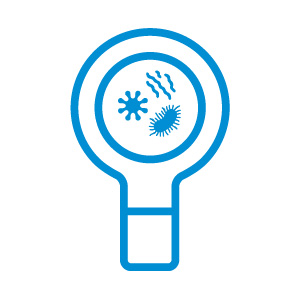
Pathogens (bugs)
Pathogens, such as viruses or bacteria can come from faecal material from grazing animals or animal or human effluent storage and disposal.
- E.coli is an indicator of faecal contamination. You should test for E. coli quarterly, especially following heavy rainfall.
- Drinking Water Standards for NZ 2022 state that the maximum acceptable value for E.coli is less than 1 in 100 mL of sample.
- Seek specialist advice if your water requires treatment for pathogens. Methods could include one or a combination of ultraviolet disinfection, chlorination, and filtration. As an interim solution, boiling water for one minute will destroy most pathogens.
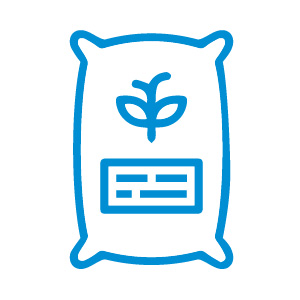
Nitrate
Nitrate can enter groundwater from farming activities, usually through animal urine and fertilisers, as well as from wastewater disposal and landfills.
- We recommend testing nitrate levels annually, preferably during spring or autumn when nitrate levels tend to be higher. You should flush the tap for 10 minutes before sampling.
- Water with nitrate above the maximum acceptable value should not be used to prepare formula for very young babies. Pregnant women and parents of new babies should talk to their lead maternity carer about the risks.
- Boiling or filters do not remove nitrate from the water. Seek specialist advice if your water requires treatment for nitrate. Methods could include reverse osmosis or ion exchange.
- Drinking Water Standards of NZ 2022 state that the maximum acceptable value for nitrate is 11.3 mg/L expressed as NO3-N or 50 mg/L expressed as NO3.
For more information on nitrate, visit our Nitrate – what’s the story? page.
Download Risk Maps of Nitrate in Canterbury Groundwater 2022 (PDF File, 2.85MB)
The maps show where we have previously found high levels of nitrate in water samples from wells.
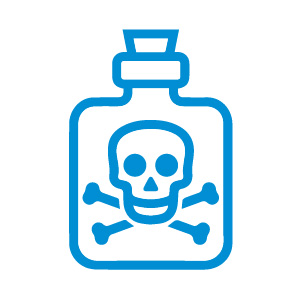
Heavy metals and organic chemicals
Heavy metals include cadmium, lead, manganese and arsenic. Organic chemicals include petroleum compounds, industrial solvents and pesticides.
- These contaminants can come from a variety of sources including old sheep dips, landfills and industry.
- The Listed Land Use Register (LLUR) is a publicly available database of sites where hazardous activities and industries have been located throughout Canterbury. This can help you identify whether any of these activities have been carried out on or near your property.
- Arsenic and manganese also occur naturally in the sediments in some parts of Canterbury and can reach harmful levels in groundwater, especially if the water is low in oxygen. If a water supply has a bad odour (smells like rotten eggs or sour cabbage) or high iron levels causing rusty staining where it comes into contact with air, these are signs that the water is low in oxygen and it is advisable to test for arsenic and manganese.
- A test for a full range of heavy metals and organic chemicals can be expensive, but only needs to be done once, unless you notice a change in the water.
- Boiling or filters do not remove dissolved heavy metals from the water. Seek specialist advice if your water requires treatment for heavy metals or organic contaminants.
Water treatment
If you are concerned about the quality of your water supply, or if testing shows that the water does not meet drinking-water standards, you may need to consider treating the water. Water treatment is complex and requires specialist advice specific to an individual supply.
ESR (Institute of Environmental Science and Research) have produced useful introductory guidance on their website.
Christchurch water
Christchurch has a plentiful supply of fresh clean drinking water. In fact, Christchurch's aquifers are replenished with 375 billion litres of water each year, most of which is not used and flows out to sea.
We work with the community to help ensure we protect our fresh water now and for generations to come. People from across our region are working together as kaitiaki to protect and improve our water resources.
Around three-quarters of Christchurch’s groundwater comes from the Waimakariri. Water seeps through the river bed and into the groundwater, which flows toward the city at a rate of about 25 metres per day.
Rain that falls onto the land west of Christchurch also contributes to the groundwater system. In addition, recent information suggests that some of the deepest groundwater beneath Christchurch may come from rain and irrigation water that falls on the land to the north of the Waimakariri River.
This groundwater is famously pure at its source. To ensure it stays pure, the area above the aquifer is subject to strict land-use rules under the Canterbury Land and Water Regional Plan to minimise the risk of contamination. That’s why you’ll find recreational parks and very low intensity stock grazing in this part of Canterbury.
The Christchurch City Council is the only organisation that can apply to take more water from our aquifer, and it can only do so to use for community drinking water supply.
For information regarding chlorination of the Christchurch drinking water supply, see the CCC website.
More information
- Read our brochure on private well testing and protection (PDF File, 244.54KB)
- Contact your local water zone committee.
- Find out more about drinking water safety.
- Information about the supply of safe drinking water to households that are not connected to town water supplies.
- Information for water suppliers about acceptable solutions (Roof Water Supplies; Spring and Bore Drinking Water Supplies; and Mixed use Rural Water Supplies)

